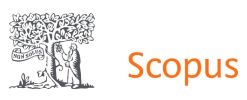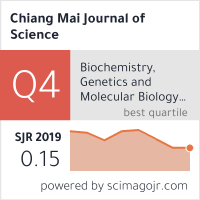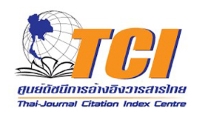JOURNAL DETAIL
Porous Poly(ethylene oxide) / Poly(L-lactic acid) Fiber Fabricated via Coaxial Electrospinning: Potential as Biomedical Applications.
Paper Type |
Contributed Paper |
Title |
Porous Poly(ethylene oxide) / Poly(L-lactic acid) Fiber Fabricated via Coaxial Electrospinning: Potential as Biomedical Applications. |
Author |
Ramaimas Chankoa , Narumol Kreua-ongarjnukool, Pitt Supaphol and Prasit Pavasant |
Email |
nkk@kmutnb.ac.th; pitt.s@chula.ac.th |
|
Abstract: The conventional electrospinning setup was modified to utilize two separate coaxial delivery channels. This research focused on the fabrication of porous core-shell fibers by phase separation. Poly(L-lactic acid: PLLA) and Poly(ethylene oxide: PEO) were used to fabricate into shell and core layers, respectively. Phase separation was used to introduce porosity into the PLLA shell layer. Bovine serum albumin (BSA) was incorporated within the core layer through mixing with a PEO solution. The core-shell fibers and the BSA–incorporated core-shell fibers were characterized with regard to their physical, physico-chemical properties and release characteristic of BSA. The protein release rate can be controlled by adjusting the surface topography of core-shell fibers. The biological compatibility was evaluated by an indirect cytotoxicity test using murine pre-osteoblastic cells (MC3T3-E1). In conclusion, BSA-incorporated porous core-shell fibers were good candidates to be used as biomedical applications. |
|
Start & End Page |
1301 - 1316 |
Received Date |
2013-09-17 |
Revised Date |
|
Accepted Date |
2013-11-21 |
Full Text |
Download |
Keyword |
Coaxial electrospinning, Porous core-shell fiber mats, Bovine serum albumin |
Volume |
Vol.41 No.5/2 (OCTOBER 2014) |
DOI |
|
Citation |
Chankoa R., Kreua-ongarjnukool N., Supaphol P. and Pavasant P., Porous Poly(ethylene oxide) / Poly(L-lactic acid) Fiber Fabricated via Coaxial Electrospinning: Potential as Biomedical Applications., Chiang Mai Journal of Science, 2014; 41(5/2): 1301-1316. |
| View:823 Download:261 | |
RELATED ARTICLE
page: 775 - 782
Author:Piyaporn Kampeerapappun*[a] and Nipon Phanomkate[b]
Vol.40 No.4 (OCTOBER 2013) View: 886 Download:276
Copyrights © Since 2021 All Rights Reserved by Chiang Mai Journal of Science










